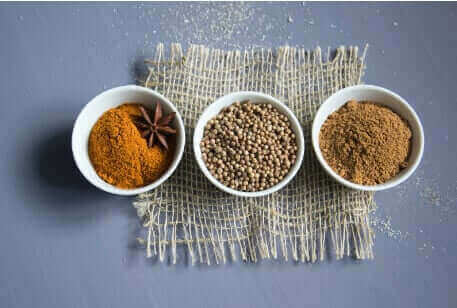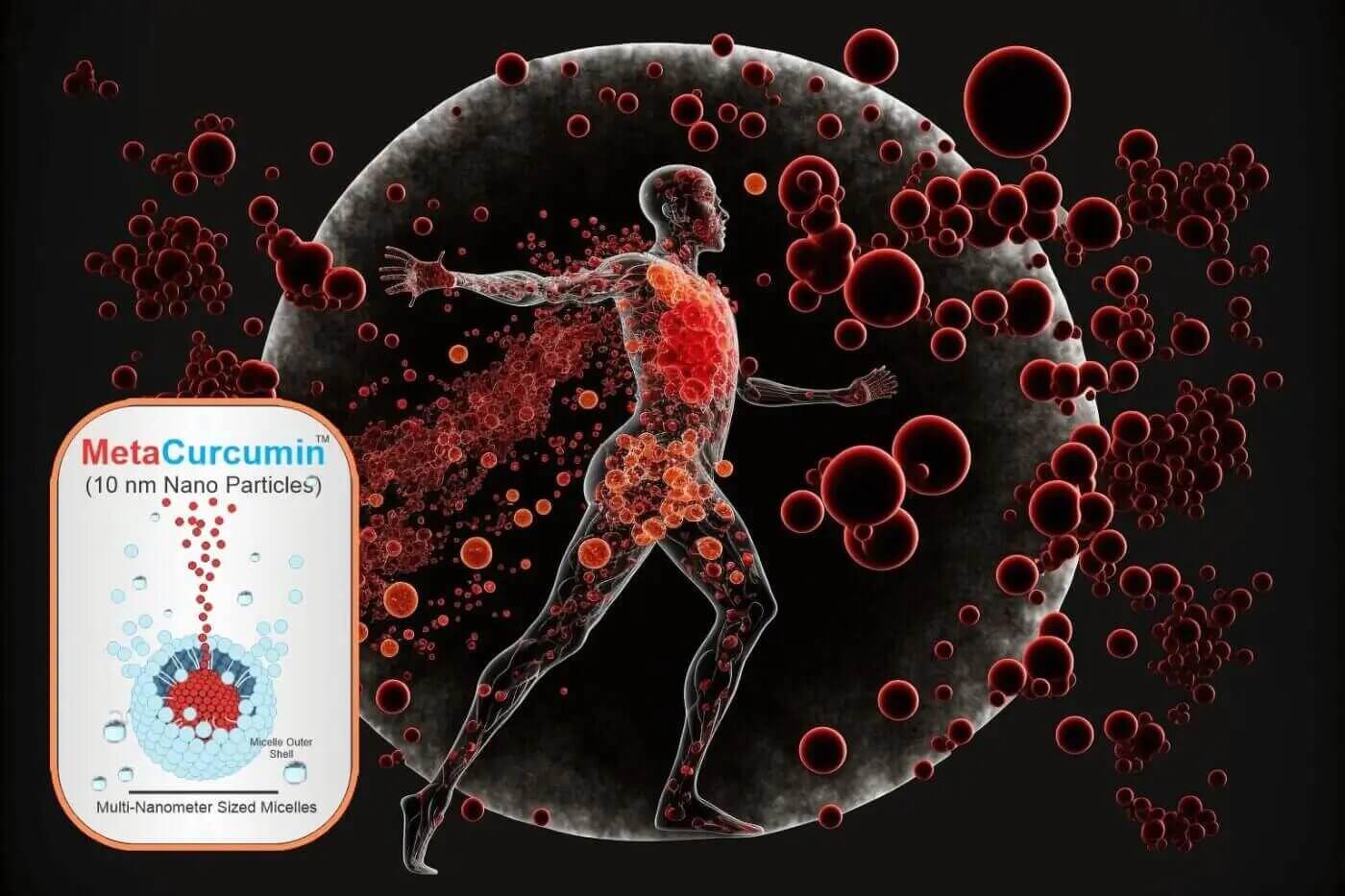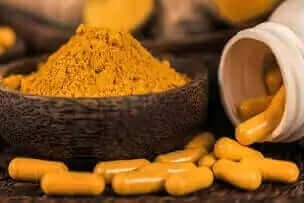Curcumin: The Revolutionary Compound Transforming Modern Health and Wellness
Curcumin stands at the forefront of natural health innovation, bridging ancient wisdom with cutting-edge science. This powerful compound from turmeric root offers extraordinary potential for those seeking natural solutions to inflammation, metabolic health, and overall vitality. Understanding how curcumin works opens doors to remarkable health transformations that countless individuals have already experienced.
The journey of curcumin from traditional medicine cabinet to modern wellness powerhouse reveals fascinating insights about nature's pharmacy. When ancient healing traditions meet contemporary research, the results inspire hope for better health outcomes. This comprehensive guide explores everything you need to know about curcumin, its metabolite tetrahydrocurcumin, and practical ways to harness their benefits.
What Makes Curcumin Essential for Your Health Journey
Imagine a single natural compound that addresses multiple health concerns simultaneously. Curcumin delivers precisely that promise. Research consistently demonstrates its remarkable antioxidant profile, which translates into tangible benefits for everyday wellness. From supporting healthy inflammation response to enhancing metabolic efficiency, curcumin offers solutions that resonate with modern health challenges.
The beauty of curcumin lies in its versatility. Whether you're an athlete seeking recovery support, a professional managing stress-related inflammation, or someone pursuing healthy aging, curcumin adapts to your needs. Its mechanisms work synergistically with your body's natural processes, creating positive cascades of wellness benefits.
The Science Behind Curcumin's Powerful Effects
Understanding how curcumin creates such profound health impacts starts with examining its molecular interactions. This golden compound doesn't just work on surface levels; it penetrates deep into cellular mechanisms, influencing gene expression and protein synthesis in beneficial ways.
Key Mechanisms of Curcumin Action
- AP-1 Transcription Factor Modulation: Curcumin intelligently regulates AP-1 activity, enhancing beneficial antioxidant enzyme production while inhibiting harmful tumor-promoting expressions. This dual action showcases nature's sophisticated approach to cellular health.
- Apoptosis Induction in Damaged Cells: By blocking protective mechanisms like bcl-2 in compromised cells, curcumin helps your body maintain healthy cellular populations. This selective action supports your body's natural defense systems.
- mTOR Pathway Regulation: While supporting healthy muscle growth and strength, curcumin simultaneously manages inflammation-related mTOR activity, creating balanced cellular environments conducive to optimal health.
- Protein Kinase Inhibition: Through targeted inhibition of Src and FAK pathways, curcumin helps prevent the development of various health complications, showcasing its preventive potential.
The Revolutionary NF-kB Pathway Connection
Perhaps the most exciting aspect of curcumin research involves its interaction with the NF-kB pathway. This master regulator of inflammation becomes overactive in many modern health conditions. Curcumin's ability to modulate this pathway explains its widespread anti-inflammatory effects, offering hope to millions dealing with chronic inflammation.
When curcumin blocks excessive NF-kB activation, positive changes ripple throughout your body. Joint comfort improves, energy levels stabilize, and overall wellness flourishes. This single mechanism underlies many of curcumin's celebrated benefits, from supporting cardiovascular health to promoting cognitive clarity.
Tracing Curcumin's Journey: From Ancient Wisdom to Modern Medicine
The story of curcumin begins over 4,000 years ago in the vibrant cultures of India and Asia. Turmeric, curcumin's source, emerged as both a sacred element in spiritual practices and a cornerstone of traditional healing systems. This dual role speaks to the profound respect ancient civilizations held for this golden spice.

Ayurvedic texts from 250 BC document turmeric's use for digestive health, respiratory support, and energy enhancement. Traditional Chinese Medicine similarly recognized its value, incorporating it into formulations for promoting circulation and reducing stagnation. These time-tested applications laid the groundwork for modern curcumin research.
Understanding Turmeric: The Natural Source of Curcumin
Turmeric (Curcuma longa) belongs to the Zingiberaceae family, sharing lineage with other healing plants like ginger and grains of paradise. The rhizome, an underground stem system, houses the highest concentrations of beneficial compounds, including curcumin. This botanical architecture protects and concentrates the active ingredients, creating nature's own delivery system.

The cultivation and harvesting of turmeric remain largely traditional, preserving the integrity of its compounds. Farmers in India, Indonesia, and other tropical regions continue practices passed down through generations, ensuring optimal curcumin content in their crops. This connection to tradition enhances the authenticity and potency of modern curcumin supplements.
Curcuminoids: The Power Trio Behind Turmeric's Benefits
While turmeric contains hundreds of compounds, three curcuminoids drive its therapeutic effects. Curcumin leads this triumvirate, comprising approximately 77% of total curcuminoids. Demethoxycurcumin and bisdemethoxycurcumin complete the trio, each contributing unique properties to the overall health benefits.

This natural combination creates synergistic effects that isolated compounds cannot replicate. Research shows that while curcumin dominates the activity, the supporting curcuminoids enhance absorption, stability, and biological activity. This natural wisdom reminds us that nature often provides complete solutions rather than single ingredients.
Practical Applications: How to Maximize Curcumin Benefits
Incorporating curcumin into your daily routine opens pathways to enhanced wellness. Success stories from individuals using curcumin supplements report improvements in joint comfort, mental clarity, digestive health, and overall vitality. These real-world results validate centuries of traditional use while inspiring new applications.
Optimizing Curcumin Absorption and Effectiveness
The challenge with standard curcumin lies in its naturally low bioavailability. However, modern science has developed solutions that dramatically enhance absorption. Combining curcumin with black pepper extract (piperine) increases bioavailability by up to 2,000%. Lipid-based formulations and nanoparticle technologies offer even greater enhancements, making curcumin's benefits more accessible than ever.
Timing also matters for optimal results. Taking curcumin with meals containing healthy fats improves absorption while reducing potential digestive sensitivity. Many successful users report taking curcumin twice daily, morning and evening, to maintain consistent blood levels and maximize benefits.
Curcumin for Specific Health Goals
For Athletic Performance and Recovery: Athletes using curcumin report faster recovery times, reduced muscle soreness, and improved endurance. The compound's anti-inflammatory properties help manage exercise-induced oxidative stress while supporting healthy muscle adaptation.
For Cognitive Support: Regular curcumin supplementation supports brain health through multiple pathways. Users report enhanced focus, improved mood stability, and better stress management. The compound's ability to cross the blood-brain barrier makes it particularly valuable for neurological support.
For Metabolic Health: Curcumin's effects on metabolic pathways translate to real benefits for weight management and energy production. Studies show improvements in insulin sensitivity, lipid profiles, and overall metabolic efficiency with consistent use.
For Healthy Aging: The compound's comprehensive antioxidant and anti-inflammatory effects make it ideal for supporting graceful aging. Users report improvements in skin health, joint flexibility, and overall vitality that enhance quality of life.
Tetrahydrocurcumin: The Next Evolution in Curcumin Science
When your body metabolizes curcumin, it produces tetrahydrocurcumin, a compound with enhanced stability and unique benefits. This metabolite represents the next frontier in curcumin research, offering advantages that complement and extend beyond standard curcumin supplementation.
Tetrahydrocurcumin demonstrates superior antioxidant activity in certain contexts, particularly for skin health and cellular protection. Its enhanced stability means longer-lasting effects in your body, potentially requiring less frequent dosing for maintained benefits. This evolution in curcumin science opens new possibilities for targeted health applications.
Combining Traditional Wisdom with Modern Innovation
The future of curcumin supplementation lies in honoring traditional knowledge while embracing scientific advancement. Modern extraction methods preserve the full spectrum of curcuminoids while enhancing their bioavailability. Innovative delivery systems ensure that more people can access curcumin's benefits regardless of dietary restrictions or absorption challenges.
Research continues to uncover new applications for curcumin, from supporting respiratory health to enhancing liver function. Each discovery reinforces the wisdom of traditional medicine while providing new hope for addressing contemporary health challenges. This convergence of ancient and modern creates unprecedented opportunities for natural health optimization.
Making Curcumin Work for Your Unique Health Journey
Your path to wellness with curcumin begins with understanding your specific health goals and choosing appropriate formulations. Whether seeking general wellness support or targeting specific concerns, curcumin offers flexible solutions that adapt to your needs.
Start with quality products from reputable sources that prioritize purity and potency. Look for standardized extracts that guarantee curcuminoid content and consider enhanced formulations if you have experienced absorption challenges with standard supplements. Remember that consistency matters more than mega-doses; regular, moderate intake produces the best long-term results.
Track your progress by noting improvements in energy, comfort, and overall wellbeing. Many users keep wellness journals to document their curcumin journey, finding that awareness of positive changes motivates continued use and optimization of their supplement routine.
The Bright Future of Curcumin in Personal Health
As research expands our understanding of curcumin, its role in personal health optimization grows ever more significant. From supporting healthy inflammation response to promoting cellular vitality, curcumin stands as a testament to nature's healing wisdom validated by modern science.
The accessibility of high-quality curcumin supplements means that everyone can experience these benefits. Whether you're beginning your wellness journey or seeking to enhance existing health practices, curcumin offers proven support backed by thousands of years of traditional use and hundreds of scientific studies.
Your decision to explore curcumin's benefits represents an investment in long-term health and vitality. As more people discover its transformative potential, curcumin continues to inspire hope and deliver results that improve quality of life across diverse populations and health goals.
Frequently Asked Questions About Curcumin
What makes curcumin different from regular turmeric powder?
Curcumin represents the concentrated active compound extracted from turmeric, typically standardized to 95% curcuminoids. While turmeric powder contains only 3-5% curcumin, supplements provide therapeutic doses that research shows necessary for significant health benefits. This concentration allows you to experience curcumin's full potential without consuming impractical amounts of turmeric spice.
How long does it take to see results from curcumin supplementation?
Individual responses vary, but many users report initial benefits within 4-8 weeks of consistent daily use. Joint comfort and digestive improvements often appear first, followed by enhanced energy and cognitive clarity. Optimal results typically develop over 3-6 months as curcumin builds up in your system and influences long-term cellular health pathways.
Can curcumin be taken with other supplements or medications?
Curcumin generally combines well with other natural supplements, particularly omega-3 fatty acids, probiotics, and vitamin D. However, because curcumin can influence blood clotting and interact with certain medications, consulting healthcare providers ensures safe integration into your wellness routine. This professional guidance helps optimize benefits while avoiding potential interactions.
What's the best way to enhance curcumin absorption?
Combining curcumin with black pepper (piperine) increases absorption dramatically. Taking supplements with meals containing healthy fats like avocado, nuts, or olive oil further enhances bioavailability. Modern formulations using liposomal technology or nanoparticles offer superior absorption without requiring additional compounds, making daily supplementation more convenient and effective.
Are there any side effects associated with curcumin use?
Curcumin demonstrates excellent safety profiles in research, with most people experiencing no adverse effects. Some individuals may notice mild digestive changes when beginning supplementation, which typically resolve as the body adjusts. Starting with lower doses and gradually increasing helps minimize any initial sensitivity while allowing your system to adapt to curcumin's beneficial effects.
How does curcumin support healthy aging?
Curcumin addresses multiple aging pathways simultaneously through its antioxidant and anti-inflammatory properties. It supports cellular health by protecting DNA from oxidative damage, maintains healthy inflammatory responses, and promotes efficient cellular energy production. These combined effects translate to better joint health, cognitive function, skin vitality, and overall wellness as we age.
What distinguishes high-quality curcumin supplements?
Premium curcumin supplements feature standardized extracts with guaranteed curcuminoid content, typically 95%. Look for third-party testing verification, enhanced absorption technologies, and clean ingredient lists without unnecessary fillers. Reputable manufacturers provide certificates of analysis and use extraction methods that preserve the full spectrum of beneficial compounds while ensuring purity and potency.
Can curcumin help with exercise recovery and performance?
Athletes and fitness enthusiasts report significant benefits from curcumin supplementation. Its anti-inflammatory properties help reduce exercise-induced muscle damage and soreness, allowing faster recovery between training sessions. Additionally, curcumin supports healthy oxidative stress management during intense physical activity, potentially improving endurance and overall athletic performance over time.
How does tetrahydrocurcumin differ from regular curcumin?
Tetrahydrocurcumin represents curcumin's primary metabolite, offering enhanced stability and unique benefits. While curcumin provides powerful systemic effects, tetrahydrocurcumin demonstrates superior antioxidant activity in specific applications, particularly for skin health. This metabolite's increased stability means longer-lasting effects in your body, potentially offering advantages for sustained health support.
What role does curcumin play in metabolic health?
Curcumin positively influences multiple metabolic pathways, supporting healthy blood sugar regulation, lipid metabolism, and energy production. Research shows improvements in insulin sensitivity and metabolic efficiency with regular supplementation. These effects make curcumin valuable for anyone seeking to optimize their metabolic health, manage weight effectively, or enhance overall energy levels naturally.
Scientific References
- https://www.sciencedirect.com/science/article/abs/pii/S0144861721014673
- https://onlinelibrary.wiley.com/doi/abs/10.1002/ptr.7360
- https://www.sciencedirect.com/science/article/abs/pii/S2095496422000309
- https://www.mdpi.com/1420-3049/27/16/5236
- https://www.tandfonline.com/doi/abs/10.1080/14728222.2022.2061349?cookieSet=1
- https://onlinelibrary.wiley.com/doi/abs/10.1111/odi.14271
- https://www.mdpi.com/1422-0067/23/21/13334
- https://www.mdpi.com/1420-3049/27/13/4058
- https://www.mdpi.com/1422-0067/23/4/1964
- https://www.sciencedirect.com/science/article/abs/pii/S0006291X06028166?via%3Dihub







